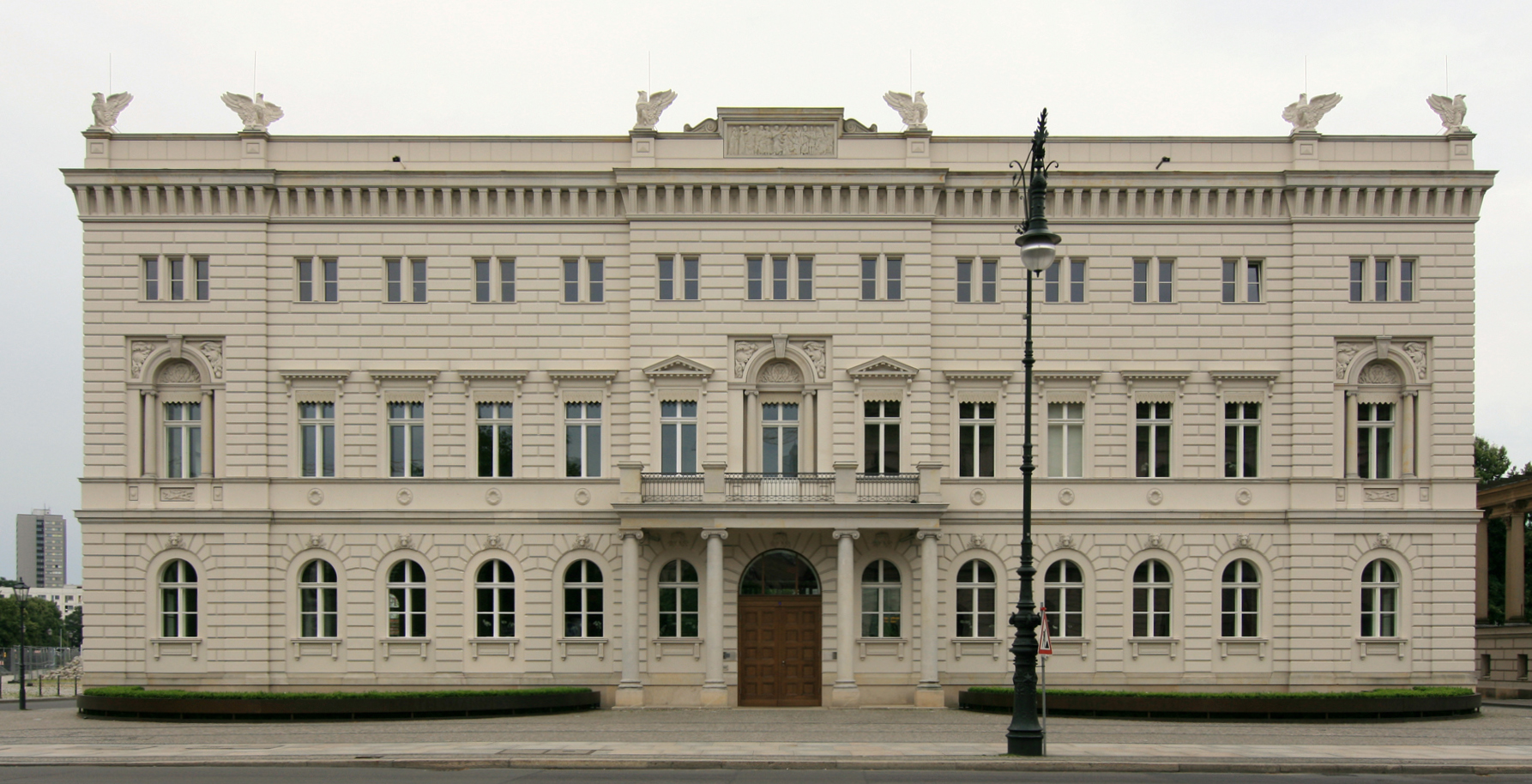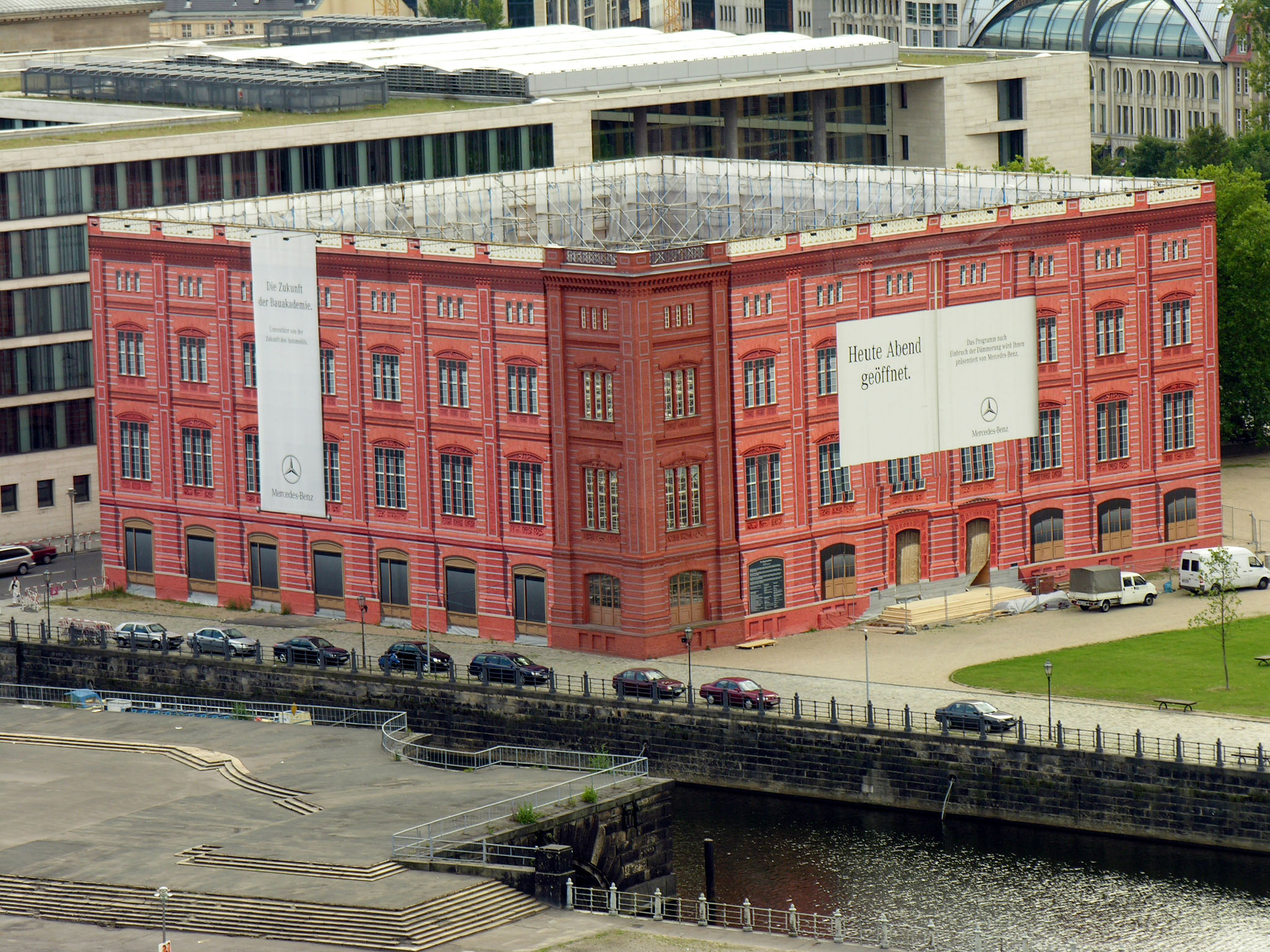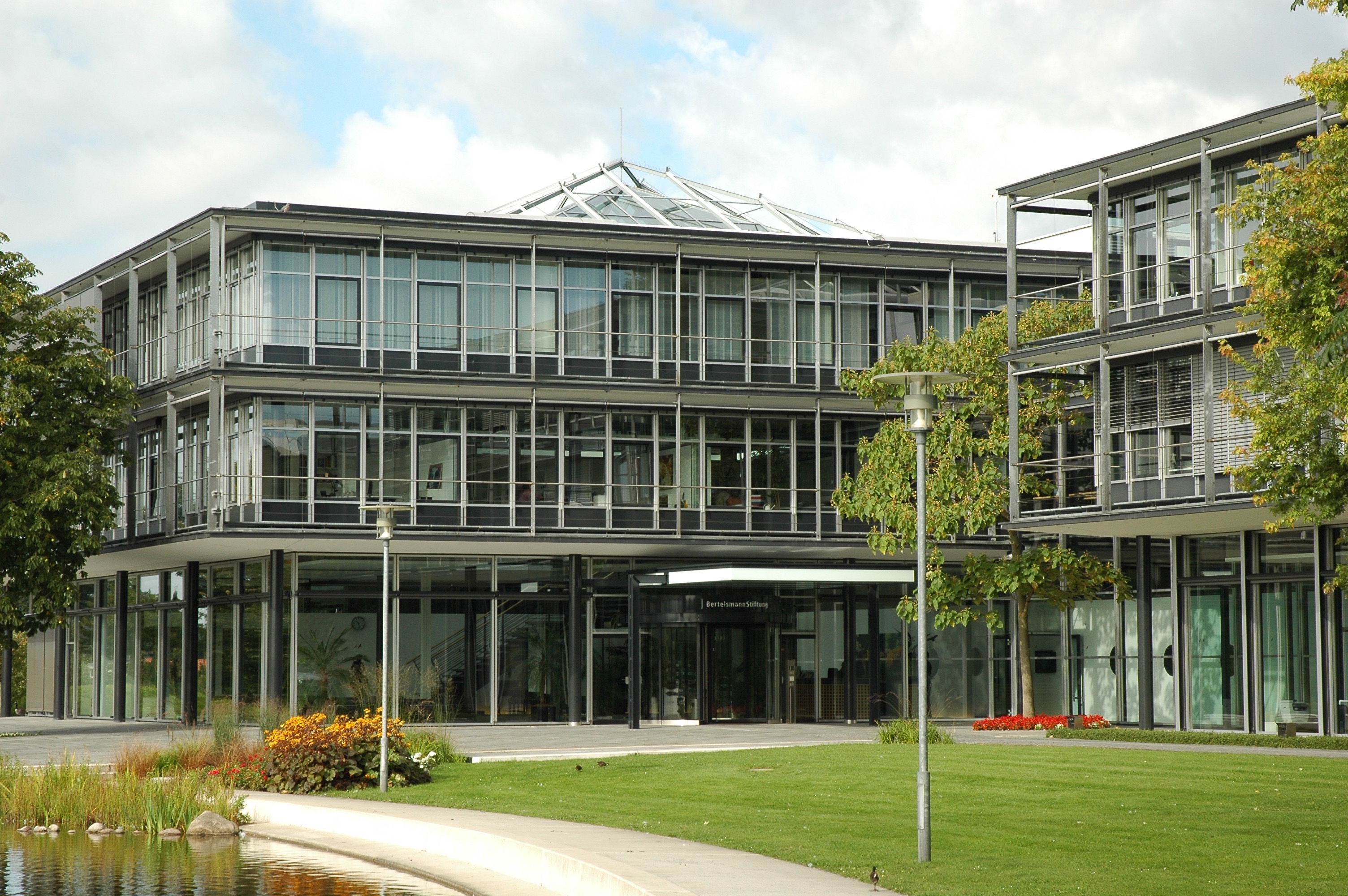|
Alte Kommandantur
The Kommandantenhaus (Commandant's House), also called Alte Kommandantur (Old Commandantura), on Unter den Linden boulevard in the historic centre of Berlin is the former headquarter of the city's commandant. It was built in 1654 and renovated from 1873 to 1874 in Renaissance Revival style. Damaged during the Allied bombing in World War II and later demolished, it was rebuilt from 2001 to 2003 as part of the Forum Fridericianum. Since then, it has been home to a representative office of Bertelsmann. Bertelsmann The Kommandantenhaus was the workplace of the French writer , the German politician |
World War II
World War II or the Second World War, often abbreviated as WWII or WW2, was a world war that lasted from 1939 to 1945. It involved the vast majority of the world's countries—including all of the great powers—forming two opposing military alliances: the Allies and the Axis powers. World War II was a total war that directly involved more than 100 million personnel from more than 30 countries. The major participants in the war threw their entire economic, industrial, and scientific capabilities behind the war effort, blurring the distinction between civilian and military resources. Aircraft played a major role in the conflict, enabling the strategic bombing of population centres and deploying the only two nuclear weapons ever used in war. World War II was by far the deadliest conflict in human history; it resulted in 70 to 85 million fatalities, mostly among civilians. Tens of millions died due to genocides (including the Holocaust), starvation, ma ... [...More Info...] [...Related Items...] OR: [Wikipedia] [Google] [Baidu] |
Bauakademie
The Bauakademie (''Building Academy'') in Berlin, Germany, was a higher education school for the art of building to train master builders. It originated from the construction department of the Academy of Fine Arts and Mechanical Sciences (from 1704), which emphasized the aesthetic elements of art of building while ignoring the technical. Thus, the governmental Upper Building Department ("UBD") decided to establish an entirely new building educational institution named "Bauakademie". It was founded on 18 March 1799 by King Frederick William III and, in 1801, incorporated into the UBD, as its section. History The building of the ''Building Academy'' (''Bauakademie''), built between 1832 and 1836 (later known as ''Schinkel's Bauakademie''), is considered one of the forerunners of modern architecture due to its hithertofore uncommon use of red brick and the relatively streamlined facade of the building. Designed by Karl Friedrich Schinkel, it was built near the Berlin City Palac ... [...More Info...] [...Related Items...] OR: [Wikipedia] [Google] [Baidu] |
Barry Bergdoll
Barry Bergdoll is Meyer Schapiro Professor of art history in the Department of Art History and Archaeology at Columbia University and from 2007 to 2019 a curator in the Department of Architecture and Design at the Museum of Modern Art, New York, where from 2007 to 2013 he served as Philip Johnson Chief Curator of Architecture and Design. He serves, since 2018, as President of the Board of the Center for Architecture in New York City and a member of the Pritzker Architecture Prize jury since 2019. Education Bergdoll graduated from Columbia University in 1977 and studied at King's College, Cambridge University on a Kellett Fellowship 1977-79 before returning to Columbia to complete his Ph.D in 1986. Academic career Bergdoll's chief interest is architectural history, particularly that of France and Germany since 1750. He studies architecture from an art historical approach, however, tying it to history, sociology, and culture. He has studied cultural representation in architec ... [...More Info...] [...Related Items...] OR: [Wikipedia] [Google] [Baidu] |
Disneyfication
In the field of sociology, the term Disneyfication—or Disneyization—describes the commercial transformation of things (e.g. entertainment) or environments into something simplified, controlled, and 'safe'—reminiscent of the Walt Disney brand (such as its media, parks, etc.).“Disneyfication.” ''Merriam-Webster''. Retrieved 2021 March 20. It broadly describes the processes of stripping a real place or thing of its original character, and representing it in a sanitized format: references to anything negative or inconvenient are removed, and the facts are dumbed down with the intent of rendering the subject more pleasant and easily grasped. In the case of physical places, this involves replacing the real with an idealized, tourist-friendly veneer—resembling the "Main Street, U.S.A." attractions at Disney theme parks. Based on rapid Western-style globalization and consumerist lifestyles, the term ''Disneyfication'' is mostly used derogatorily to imply the social and cultural ... [...More Info...] [...Related Items...] OR: [Wikipedia] [Google] [Baidu] |
Bertelsmann Stiftung
The Bertelsmann Stiftung is an independent foundation under private law, based in Gütersloh, Germany. It was founded in 1977 by Reinhard Mohn as the result of social, corporate and fiscal considerations. As the Bertelsmann Stiftung itself has put it, the foundation promotes "reform processes" and "the principles of entrepreneurial activity" to build a "future-oriented society." Since 1993, the Bertelsmann Stiftung has held the majority of capital shares in the Bertelsmann Group. It holds 80.9% together with the Reinhard Mohn Stiftung and the BVG Stiftung but has no voting rights. History Establishment of the foundation At the end of the 1970s, there were discussions concerning who would follow Reinhard Mohn as chairman of Bertelsmann. Against this background and because he believed that the state must be able to count on its citizens' willingness to assume responsibility and take the initiative, Mohn founded the Bertelsmann Stiftung on 8 February 1977. It was officia ... [...More Info...] [...Related Items...] OR: [Wikipedia] [Google] [Baidu] |
Neo-Renaissance
Renaissance Revival architecture (sometimes referred to as "Neo-Renaissance") is a group of 19th century architectural revival styles which were neither Greek Revival nor Gothic Revival but which instead drew inspiration from a wide range of classicizing Italian modes. Under the broad designation Renaissance architecture nineteenth-century architects and critics went beyond the architectural style which began in Florence and Central Italy in the early 15th century as an expression of Renaissance humanism; they also included styles that can be identified as Mannerist or Baroque. Self-applied style designations were rife in the mid- and later nineteenth century: "Neo-Renaissance" might be applied by contemporaries to structures that others called "Italianate", or when many French Baroque features are present (Second Empire). The divergent forms of Renaissance architecture in different parts of Europe, particularly in France and Italy, has added to the difficulty of defining an ... [...More Info...] [...Related Items...] OR: [Wikipedia] [Google] [Baidu] |
Johann Gregor Memhardt
Johann Gregor Memhardt or Memhard (1607 in Linz an der Donau – 1678 in Berlin) was a master builder, architect and politician. Life Memhardt emigrated from Linz to the Netherlands in 1622, where he probably learned the art of fortification. He served as a military engineer with George William, Elector of Brandenburg from 1638 onwards and in 1641 was appointed court engineer. Under his leadership the Residenzschloss was repaired and a chapel built for crown princess Louise Henriette. In the Lustgarten he built a 'Lusthaus'. From 1651 the Schloss Oranienburg Oranienburg Palace (german: Schloss Oranienburg) is a '' Schloss'' located in the town of Oranienburg in Germany. It is the oldest Baroque ''Schloss'' in the Margraviate of Brandenburg The Margraviate of Brandenburg (german: link=no, Markgrafsc ... and its gardens were built to Memhardt's designs, known from the plan of Berlin published in 1652. 1607 births 1678 deaths Austrian politicians Austrian architects ... [...More Info...] [...Related Items...] OR: [Wikipedia] [Google] [Baidu] |
Baroque Architecture
Baroque architecture is a highly decorative and theatrical style which appeared in Italy in the early 17th century and gradually spread across Europe. It was originally introduced by the Catholic Church, particularly by the Jesuits, as a means to combat the Reformation and the Protestant church with a new architecture that inspired surprise and awe. It reached its peak in the High Baroque (1625–1675), when it was used in churches and palaces in Italy, Spain, Portugal, France, Bavaria and Austria. In the Late Baroque period (1675–1750), it reached as far as Russia and the Spanish and Portuguese colonies in Latin America. About 1730, an even more elaborately decorative variant called Rococo appeared and flourished in Central Europe. Baroque architects took the basic elements of Renaissance architecture, including domes and colonnades, and made them higher, grander, more decorated, and more dramatic. The interior effects were often achieved with the use of ''quadratura'', or ... [...More Info...] [...Related Items...] OR: [Wikipedia] [Google] [Baidu] |
East Germany
East Germany, officially the German Democratic Republic (GDR; german: Deutsche Demokratische Republik, , DDR, ), was a country that existed from its creation on 7 October 1949 until its dissolution on 3 October 1990. In these years the state was a part of the Eastern Bloc in the Cold War. Commonly described as a communist state, it described itself as a socialist "workers' and peasants' state".Patrick Major, Jonathan Osmond, ''The Workers' and Peasants' State: Communism and Society in East Germany Under Ulbricht 1945–71'', Manchester University Press, 2002, Its territory was administered and occupied by Soviet forces following the end of World War II—the Soviet occupation zone of the Potsdam Agreement, bounded on the east by the Oder–Neisse line. The Soviet zone surrounded West Berlin but did not include it and West Berlin remained outside the jurisdiction of the GDR. Most scholars and academics describe the GDR as a totalitarian dictatorship. The GDR was establish ... [...More Info...] [...Related Items...] OR: [Wikipedia] [Google] [Baidu] |
Ministry For Foreign Affairs (East Germany)
The Ministry for Foreign Affairs of the German Democratic Republic (german: Ministerium für Auswärtige Angelegenheiten der Deutschen Demokratischen Republik, abbreviated ''MfAA'') was a government body of the German Democratic Republic (East Germany) that existed from 1949 to 1990. It had its seat at Schinkelplatz in Berlin-Mitte. A new building was constructed in 1964-1967 and used by the foreign ministry, but demolished in 1996 after German reunification. The Ministry for Foreign Affairs was led by the Foreign Minister of the German Democratic Republic and a number of deputies. However, the Foreign Minister had less actual influence over the foreign policy than the central committee secretary for foreign policy in the Socialist Unity Party of Germany. As a ''de facto'' subordinate position, the Foreign Minister could be a member of some of the block parties in East Germany. The West German counterpart to the Ministry was the Federal Foreign Office. The office still serves ... [...More Info...] [...Related Items...] OR: [Wikipedia] [Google] [Baidu] |
Paul Von Hase
Karl Paul Immanuel von Hase (24 July 1885 – 8 August 1944) was a German career soldier and figured among the members of the resistance against Adolf Hitler's Nazi regime. Biography Hase was born in Hanover. He was the fifth child of Paul and Frieda von Hase. On 12 December 1921, Hase married Margarete, Baronesse von Funck in Neustrelitz. They had four children: Ina, Maria-Gisela, Alexander and Friedrich-Wilhelm. He held the following posts in the Reichswehr/Wehrmacht during the time of the Third Reich: * 1933–1934 Battalion commander in Neuruppin; * 1934–1935 Battalion commander in Landsberg an der Warthe; * 1935–1938 Commander 50th Regiment; * 1939–1940 Commander 46th Division; * 1940 Commander 56th Division; * 1940–1944 City commandant of Berlin. From 1938, Brigadier-General von Hase was privy to the conspiracy plans plotted by such men as Wilhelm Canaris, Hans Oster, Generals Erwin von Witzleben, Franz Halder and Erich Hoepner. He was an uncle of Dietrich Bo ... [...More Info...] [...Related Items...] OR: [Wikipedia] [Google] [Baidu] |







